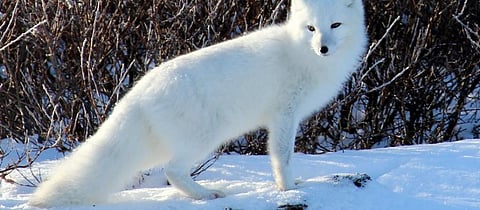

Hunters stayed on in the very cold plains of Northern Europe during winters rather than migrating, a new fossil study at a site in Poland has shown.
Researchers from the University of Exeter in the United Kingdom as well as the Polish Academy of Sciences studied the bones of Arctic or blue foxes found at Kraków Spadzista in Southern Poland — one of the largest Upper Paleolithic sites in central Europe.
Some 2,400 Arctic fox bones have been found at the site, along with a huge number of woolly mammoth bones, a report by the science, research and technology website Phys.org, said. The researchers studied and analysed the bones and teeth of the foxes that are 27,500 years old, when the last Ice Age was on.
They were able to reconstruct details about the hunted foxes, at least 29 in number, including where each one was born, how they came to the site and what time of the year they died.
They did this by studying and analysing the internal chemistry of the enamel and roots of the fox teeth.
The analysis showed that hunters had killed the foxes mainly by trapping them. After killing them, they skinned and butchered the carcasses and used the fur as well as the fat and meat.
The foxes that were hunted and killed ranged from sub-adults to very old individuals. Most were killed between late winter and late spring.
The researchers reached this conclusion as the foxes develop full winter coats around early December and begin to shed it in early spring.
“They also lay down substantial stores of body fats seasonally that are greatest from late autumn throughout the winter season and do not start to become seriously depleted until early spring,” Alexander Pryor, from the University of Exeter, who led the study, was quoted as saying the report.
“Hunters most likely targeted the foxes in the late winter period — before the onset of fur shedding and loss of critical fat supplies,” he added.
Before this study, it was not known if people retreated elsewhere during the winter at the time of the last Ice Age.
“Our research shows the cold harsh winter climates of the last Ice Age were no barrier to human activity in the area. Hunters made very specific choices about where and when to kill their prey,” Pryor said.
The study was published in the Journal of Archeological Science: Reports.